Badlands front cover.
BADLANDS. A Rediscovery of a Landscape of Extraction
Sweden’s landscapes are marked by human activities of resource extraction, historic imprints that speaks of former memories and lives that allows us to evoke feelings and connect to a site. They are celebrated and valued as territories of knowledge – landscapes that can speak about us. But today, these landscapes have reached a new industrial scale, as vast areas are laid waste, extracted and transformed. Today, these scars are conveniently hidden away from the public, to be finally forgotten.
Slite is a mining town located on Gotland and produce 77% of Sweden’s total production of cement. The huge cement factory towers over the small town, while the surrounding limestone quarries forms vast industrial Badlands that splits Site and its community in half. The future for the mining activity at Slite is unclear, after more than 100 years of extensive excavation the current quarries are reaching a point of depletion. Slite’s future is dependent on a vast number of interconnected factors and outcomes, spanning from local environmental issues, to regional planning policies and economic growth. In the current post-treatment plan for the area, the quarries will be flooded with intruding ground water as the water pumps are deactivated. The result of this action is that the industrial remains, unique habitats and evidences of geological injustices will disappear under the surface of a newly formed lake. I argue that this is a missed opportunity and does not correlate with the post-treatment plans stated goals. Thus, thesis aims to explore an alternative post-treatment scenario for these landscapes of extractions while start to uncover what future opportunities they can provide. By shifting the contemporary view of these post-industrial landscapes, we allow them to be rediscovered and revalued based upon its storied memories, unique spaces and hidden potentials. They can thus start to benefit not only the local economy, but support its surrounding ecology and society. I consider these landscapes to be key territories and essential spaces for the future, as they allow us to spatially experience and reflect over the impacts created by our consumption of resources.
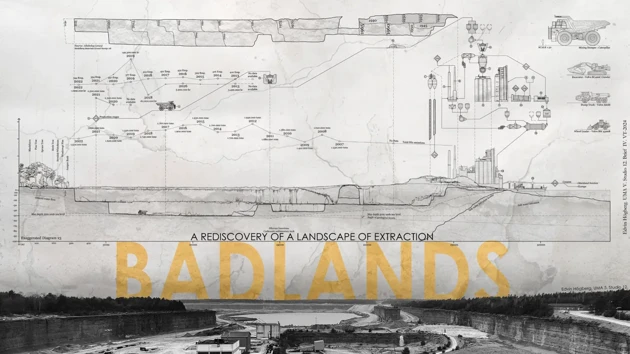
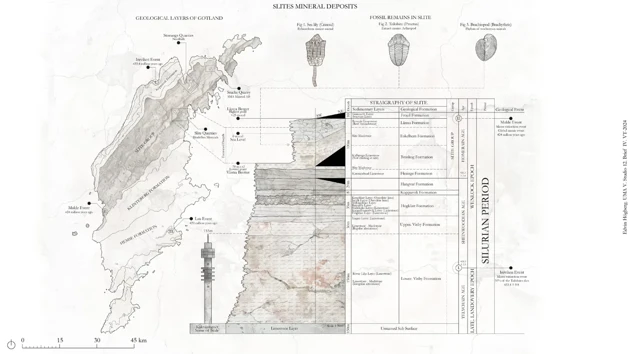
Stratigraphy of Slite’s geological layers and mineral wealth.
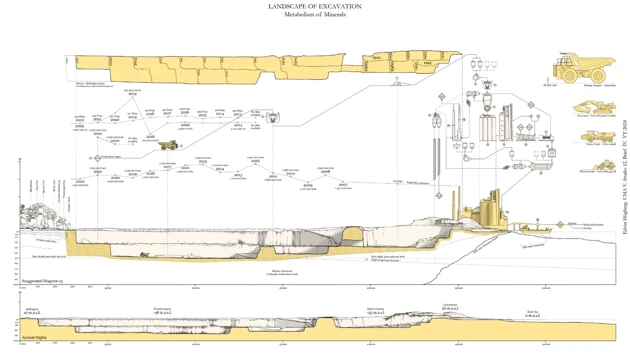
Section depicting the different stages of lime- and marlstone extraction in the western and eastern quarry at Slite.
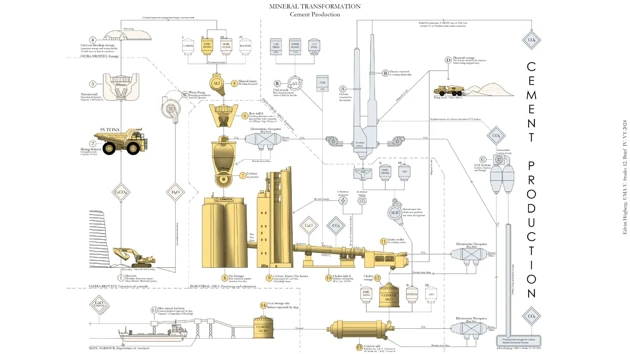
Diagram explaining the different stages and processes in the production of cement.
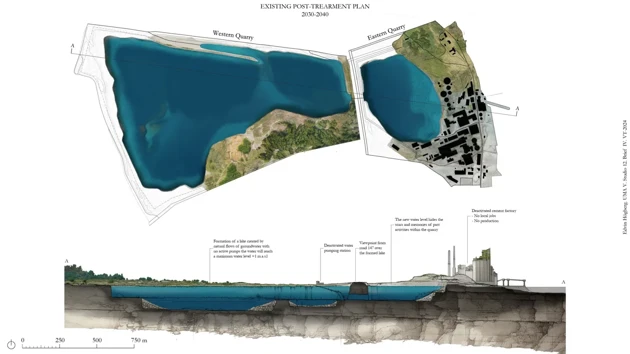
Visualization of the final stage of the existing post-treatment plan.
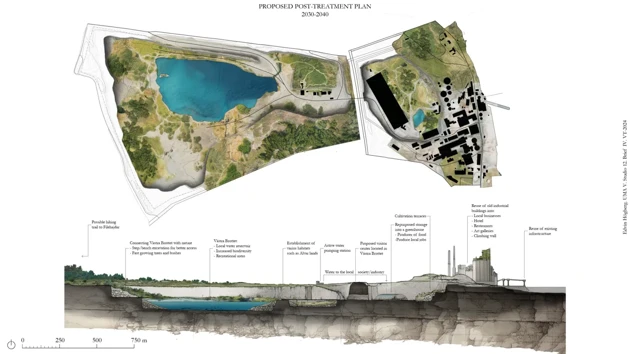
Visualization of my proposed post-treatment plan for the quarries.





